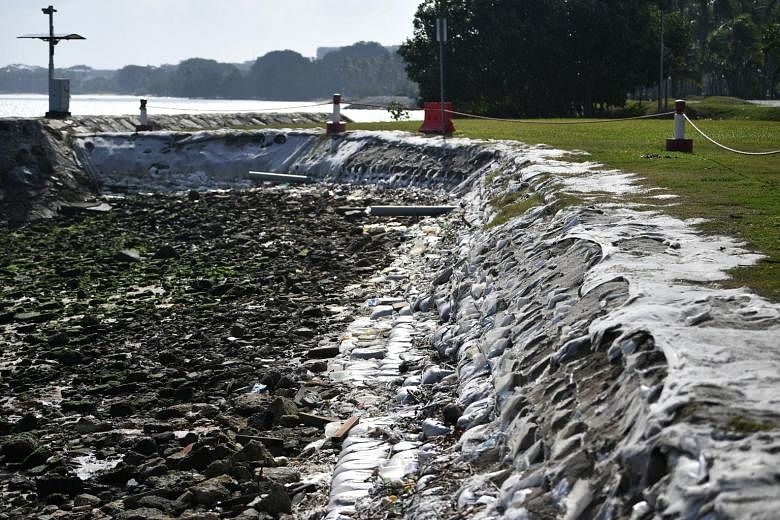SINGAPORE - People here want Singapore to do more to cut the amount of planet-warming emissions it produces, but are clear-headed about the costs, constraints and challenges involved in its journey to a low-carbon future.
This was a key finding from a public consultation exercise conducted by the National Climate Change Secretariat (NCCS) on Singapore's long-term low emissions development strategy, the results of which were released on Friday (Feb 7).
Over 2,000 submissions were collected during the exercise, which was held over a two-month period from July 16 to Sept 30 last year.
Several sessions were also organised between August last year and last month to facilitate in-depth discussions with the youth, green groups, green councils, academics and businesses from a variety of sectors, NCCS said.
The sentiment appears to cut across multiple pillars of Singapore's plans to chart its way forward in an era where people and nations are more carbon-conscious.
For instance, while there was strong support for the use of clean energy to power Singapore's industries, vehicles and homes, NCCS said people were mindful about constraints like solar intermittency and the lack of land for the installation of large solar farms.
More than 95 per cent of Singapore's energy is now generated from natural gas, a fossil fuel.
Solar energy is considered the most viable renewable energy option for the Republic.
While respondents wanted Singapore to show greater ambition in its pledge to reduce its emissions, with some calling for a transformation of the Singapore economy so its emissions reach net-zero by 2050, NCCS said people had also expressed concerns about economic competitiveness and the challenges of reducing emissions by a significant margin.
Achieving net-zero emissions by 2050 was a target recommended by climate scientists to avoid the harshest impacts of climate change.
Said NCCS: "These challenges include our lack of access to renewable energy at scale, and the high costs and nascency of key technologies."
Human activities, such as the burning of fossil fuels and deforestation, are key drivers of climate change as they produce planet-warming emissions that accumulate in the atmosphere.
Reducing such activities are the main ways that scientists say global warming can be limited, but a growing area of interest among the international community is the development of technology that can "suck" greenhouse gases such as carbon dioxide out of the air.
However, such carbon capture, utilisation and storage (CCUS) technologies are still in the research and development phase, and may not yet be commercially feasible for large-scale implementation.
Other technologies that would reduce the need on fossil fuels for energy, such as the use of hydrogen as a fuel, are also still in its infancy.
But NCCS said in a summary of the findings that the Government has commissioned studies on hydrogen and CCUS to inform the development of their long-term implementation strategies for Singapore.
NCCS said respondents were also aware that there were opportunities to be reaped as well, in sectors such as waste management, water, energy and green financing.
"Everyone needs to play their part and work together as one people, to overcome the existential challenge that climate change poses, which can threaten our way of life," said the NCCS.
"The Government will continue to encourage collective climate action, and work closely with businesses and citizens to co-create solutions to build a resilient and sustainable Singapore for the future."


